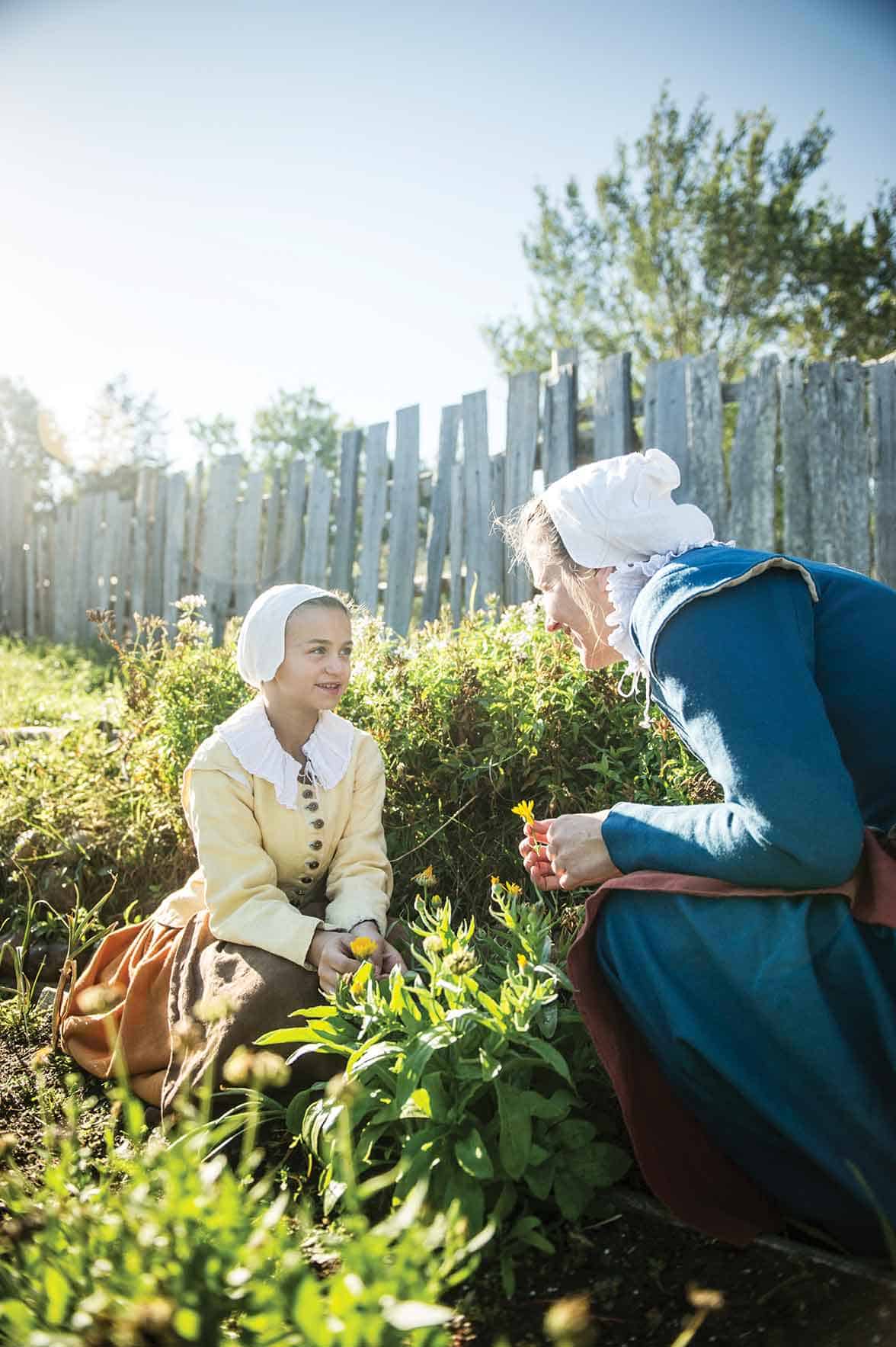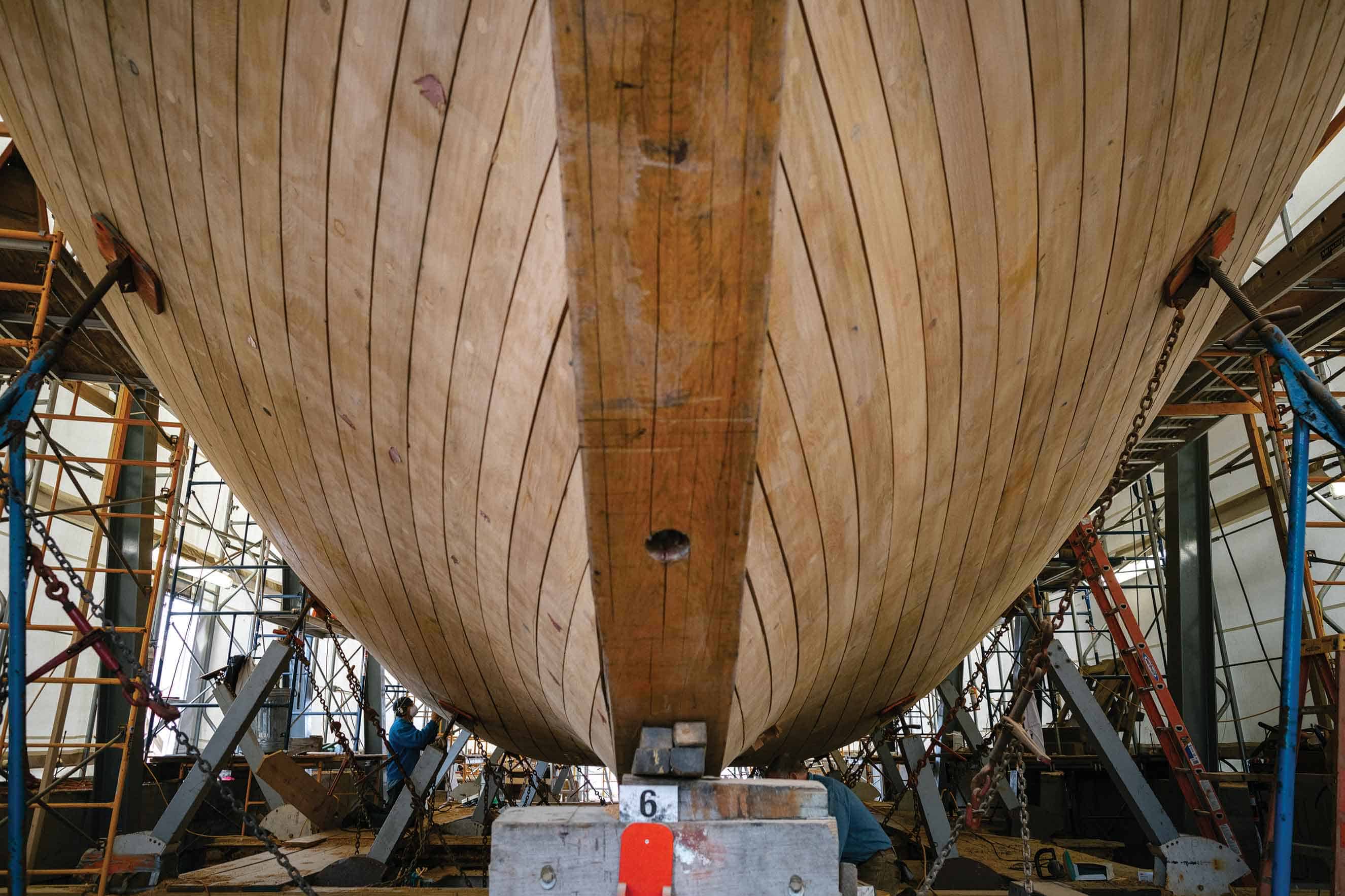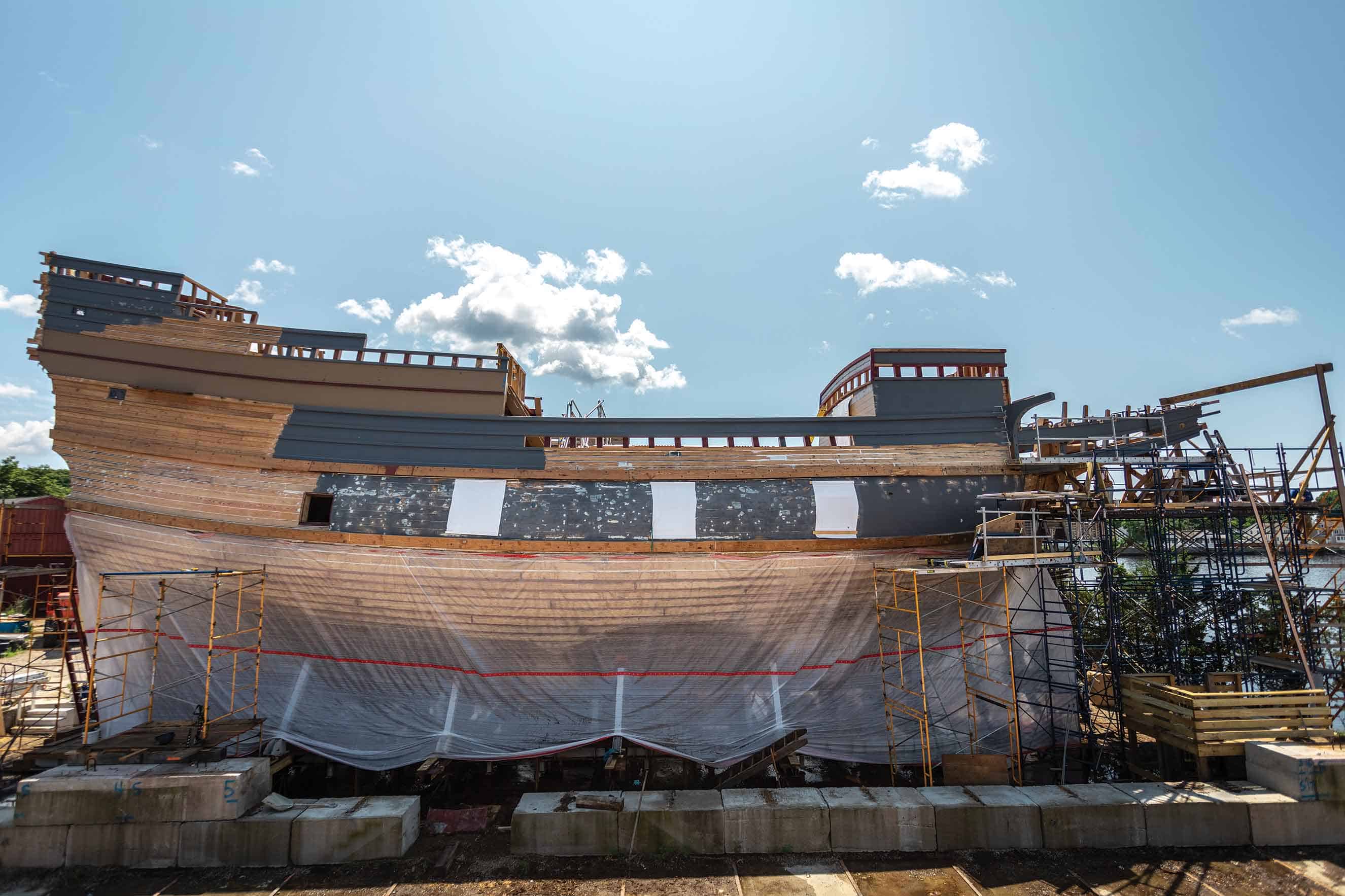Having served as the executive director of Plimoth Plantation for the past 10 years, Ellie Donovan reflects on the importance of public history, the much-anticipated return of the Mayflower in 2020 and what inspires her most about the South Shore’s famed living history museum.
By Maria Allen and Photography by Dan Cutrona
Can you describe the first time you set foot on the grounds of Plimoth Plantation?
It was my fourth grade field trip. I was excited to learn about Native people and the Pilgrims; their stories captured my imagination. I vividly remember the sights and sounds of the village and the crinkly parchment Mayflower Compact I bought in the gift shop.
You first worked at Plimoth Plantation when you were in high school. How did that experience influence your career path?
That early experience defined my life, personally and professionally. I got to sit in training sessions led by Jim Deetz [an American anthropologist considered to be one of the fathers of historical archeology]. Historic places have always inspired me. I explored other careers, but always came back to Plimoth Plantation. It is public history at its very best.
What was your primary goal when you took over as the executive director at Plimoth Plantation in 2009?
First, to steer the museum successfully through the worst national economic crisis since the Great Depression. I set out, together with our dedicated and talented staff and board of trustees, to sail through that financial storm and simultaneously embark on a journey of positive transformational change for the museum. I knew that the best sailors don’t complain about the weather, but set the sails differently in order to reach their destination. We (the trustees and staff together) did exactly that. A decade later the museum is much better and stronger for it.
Plimoth Plantation is known as a “living history” museum. What are the benefits of presenting history in this way?
Our living history educators take on the tasks, wear the clothing and use the tools of 17th-century daily life. When role playing, they adopt the worldview and customs of people of the time. The benefit is a profound sense of authenticity for our guests. It can be educational, thought-stirring, and a lot of fun. Some people prefer to learn from a contemporary point of view, so we also use that method. But “living history” means more than watching someone plant corn, or marveling at how hard life was “in the olden days.” Plimoth Plantation presents a history that Americans are still living. The American Experiment—that alchemy which brings together people of different cultures to create a whole new one—had its first laboratory here on the South Shore, complete with collaborations and conflicts, brilliant successes and heart-breaking failures, that we as Americans still have today. We have so much to learn from that early venture—about being in conversation and what happens when we don’t communicate, how a democracy works and how it might so easily fail if we don’t keep the flame burning brightly.

Many people remember visiting Plimoth
Plantation on a school field trip. How is the museum reconnecting with these people and what are some examples of ways the museum is attempting to reach new audiences?
People frequently reconnect decades after their own first visit because they bring their children or friends. As adults they realize the complexity of the history we tell, and want to know more. They’re fascinated by the meticulous scholarly research and experimental archaeology we use to create the museum. No two visits are exactly alike, because if nothing else, you have changed. People reconnect through our lively calendar of public programs—unique offerings like Plimoth After Dark, Family Fun Nights, our speaker series, hands-on history workshops, Plimoth Cinema, themed dining and our wonderful museum shops.
Name one of your favorite spots on the Plimoth
Plantation campus and explain why it is meaningful.
Impossible! From the top of the fort with its breathtaking view, to the barns housing our heritage breeds livestock, and any bench by any fire on a chilly autumn afternoon, our campus is spectacular. If I must choose: the Native Homesite looking out on the Eel River. I stand on ground that indigenous people inhabited for thousands of years. It’s there that I perceive viscerally the convergence of Native and English history. I feel with profound empathy the unfathomable complexity of two different groups of people who speak different languages and have different ways of life wanting to inhabit the very same piece of land.
What are some of Plimoth Plantation’s educational initiatives that you’re most excited about?
Our Center for 17th-Century Studies is a new collaborative community of scholars whose research and work amplify the museum’s mission, collections, and oral histories. Thanks to generous donors, the Center’s newly-renovated residence can house research fellows and interns year-round. We’re also increasing our emphasis on the beliefs and spiritual lives of the people of the 17th century, and on civics—particularly the role of the Mayflower Compact. We’re collaborating with Bridgewater State University on a new civics education program and teacher training workshops.
The museum tells the story of the first English colonists and the native Wampanoag people who lived in this region. What do you find to be the most compelling aspect about this period of history?
As with all of human history I find the stories of the people who actually lived it to be compelling–the daily lives of people carried out against the dramatic backdrop of what becomes, through choices made, the history of this country. They had ideas and made decisions that were so big and bold they couldn’t imagine the extent of their consequences and impact. They have transcended time and changed the world.
Describe why the homecoming of Mayflower to Plymouth will be significant to the local and regional community?
Most people on the South Shore know and love Mayflower—she’s the iconic centerpiece of this community. Families who came over on the original ship or soon after established the towns that we call home today, so people feel a strong connection to her. The homecoming will boost local and regional businesses as the ship is an economic anchor in the town and commonwealth’s vital tourism industry. Many business owners tell me their revenues declined sharply with the ship away. Without Mayflower here during peak visitation, we’re in the same boat. Bringing her home will be a joy and a relief.



What is one fascinating fact about the restoration of the Mayflower that people may not know?
The wood needed for the restoration isn’t available at your local lumberyard. We searched all over the country (and world) to find the white oak, live oak and longleaf yellow pine we needed. Mayflower now includes wood from at least eight states and England, of course. Much of her planking is white oak we procured from the Danish Royal Forest.
What are some of the exciting events planned for Mayflower Sails 2020?
Mayflower Sails 2020 is our maritime festival in Boston, May 14 – 19, 2020. We’ll offer tours of the ship, engaging educational activities for all ages, live music, delicious food, and more. The highlight: Mayflower will sail with the USS Constitution. Mayflower’s homecoming sail to Plymouth Harbor will be on May 21, 2020, followed by celebrations on Memorial Day weekend.
Now that 2020 is on the horizon. What do you see for the future of the museum, in the years beyond?
The 400th anniversary in 2020 is important for commemoration, celebration, remembrance and reflection. However, Plimoth’s board and staff have been focusing on a new strategic plan that will take the museum into the next decade. Looking ahead, I see us opening a new building that will house performance space and exhibits related to indigenous history and heritage; deepening and broadening our base of financial support to sustain the museum; and building on the museum’s role as a cultural center for the regional community. I also see children experiencing thought-stirring moments of inspiration, as I did, which will stay with them throughout their lives. Every fall day, when I see excited children on their first field trip to Plimoth Plantation, I think: Somewhere in that crowd of is our future executive director and board chair. I see in their curious and eager faces a very long and bright future for this museum.
For more information, visit plimoth.org, mayflowersails2020.com and sailingmayflower.org.


